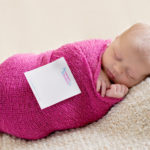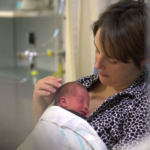Dr Denise Harrison (RN, PhD), Associate Professor, Chair in Nursing Care of Children, Youth and Families, University of Ottawa & Children’s Hospital of Eastern Ontario (CHEO) Research Institute dharrison@cheo.on.ca OR denise.harrison@uottawa.ca
This week’s EBN Twitter Chat is being held on Tuesday August 16th from 1100-1200 (Pacific Daylight Time), between 1900-2000 (British Summer Time) and is a joint venture with the Council of International Neonatal Nurse (COINN) conference 2016 being lead by Dr Densie Harrison. Participating in the Twitter chat requires a Twitter account; if you do not already have one you can create an account at www.twitter.com. Once you have an account, contributing is straightforward. You can follow the discussion by searching links to #ebnjc, or contribute by creating and sending a tweet (tweets are text messages limited to 140 characters) to @EBNursingBMJ and add #ebnjc (the EBN Twitter chat hash tag) at the end of your tweet, this allows everyone taking part to view your tweets.
We have the knowledge how to reduce pain in sick and healthy newborns during routine, frequently occurring painful procedures – breastfeeding,1 skin-to-skin care2 or very small volumes of sweet solutions, either sucrose3 or glucose.4 Evidence from randomized controlled tria ls – synthesized into systematic reviews – further distilled into clinical practice guidelines and finally concentrated into usable evidence; YouTube videos showing these strategies during bloodwork (BSweet2Babies & Power of Parent’s touch) give us ample knowledge and tools to inform our practice and help us translate the knowledge into action. Yet, studies of newborn pain practices around the world continue to show that neonatal pain in under-treated We do not consistently facilitate parents to breastfeed or hold their babies skin-to-skin during procedures, and sweet solutions are not always made available.5 Ultimately, the babies we care for in our Neonatal Intensive Care Units, Special Care Units, other hospital wards and even our healthy newborn babies suffer from pain that is easily preventable.
ls – synthesized into systematic reviews – further distilled into clinical practice guidelines and finally concentrated into usable evidence; YouTube videos showing these strategies during bloodwork (BSweet2Babies & Power of Parent’s touch) give us ample knowledge and tools to inform our practice and help us translate the knowledge into action. Yet, studies of newborn pain practices around the world continue to show that neonatal pain in under-treated We do not consistently facilitate parents to breastfeed or hold their babies skin-to-skin during procedures, and sweet solutions are not always made available.5 Ultimately, the babies we care for in our Neonatal Intensive Care Units, Special Care Units, other hospital wards and even our healthy newborn babies suffer from pain that is easily preventable.
In our COINN pain panel titled Mission Possible – Putting Neonatal Pain Knowledge into Action, (http://co inn2016.neonatalcann.ca/panel-mission-possible-putting-neonatal-pain-knowledge-action) and live Twitter Chat (HashTag #ebnjc), to be held Tuesday August 16th from 1100-1200 (Pacific Daylight Time), we will work together as neonatal pain champions in our organizations, to work at best ways to put our neonatal pain knowledge into action. Our panel includes our audience @COINN2016, as well as Dr Linda Franck, Dr Bonnie Stevens, Dr Marsha Campbell-Yeo (@DrMCampbellYeo),and myself, as the Session Chair (@dharrisonCHEO). Our discussion will include myths surrounding recommended pain care; effectiveness of maternal-led interventions to reduce procedural pain; ways we can support and empower parents and facilitate their role as partners in pain care, and improving practices at the organizational level.
inn2016.neonatalcann.ca/panel-mission-possible-putting-neonatal-pain-knowledge-action) and live Twitter Chat (HashTag #ebnjc), to be held Tuesday August 16th from 1100-1200 (Pacific Daylight Time), we will work together as neonatal pain champions in our organizations, to work at best ways to put our neonatal pain knowledge into action. Our panel includes our audience @COINN2016, as well as Dr Linda Franck, Dr Bonnie Stevens, Dr Marsha Campbell-Yeo (@DrMCampbellYeo),and myself, as the Session Chair (@dharrisonCHEO). Our discussion will include myths surrounding recommended pain care; effectiveness of maternal-led interventions to reduce procedural pain; ways we can support and empower parents and facilitate their role as partners in pain care, and improving practices at the organizational level.
I really look forward to our session, our speakers and, from our audience, ways to move forward to embed our knowledge into normalized pain management practices.
1 Shah PS, Herbozo C, Aliwalas LI, Shah VS. Breastfeeding or breast milk for procedural pain in neonates. Cochrane Database Syst Rev 2012. DOI:10.1002/14651858.CD004950.pub3.
2 Johnston C, Campbell-Yeo M, Fernandes A, Inglis D, Streiner D, Zee R. Skin-to-skin care for procedural pain in neonates. Cochrane Database Syst Rev 2014. DOI:10.1002/14651858.CD008435.pub2.
3 Stevens B, Yamada J, Ohlsson A, Haliburton S, Shorkey A. Sucrose for analgesia in newborn infants undergoing painful procedures. Cochrane Database Syst Rev 2013 2016; DOI:10.1002/14651858.CD001069.pub5.
4 Bueno M, Yamada J, Harrison D, et al. A systematic review and meta-analyses of non-sucrose sweet solutions for pain relief in neonates. Pain Res Manag 2013; 18: 153–61.
5 Harrison D, Reszel J, Wilding J, et al. Neuroprotective Core Measure 5: Neonatal Pain Management Practices during heel lance and venipuncture in Ontario, Canada. Newborn Infant Nurs Rev 2015; 15: 116–23.